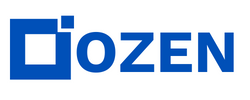AR/VR Simulation Workflow Explained: From Optics to Thermal Stress
Augmented Reality (AR) and Virtual Reality (VR) are reshaping how we interact with the world, from immersive training to advanced medical applications. Designing these systems requires a sophisticated workflow. Let me show you how it works.
1. Optical System Design
We start by designing and optimizing the optical system using Ansys Zemax. This helps us manage lenses, mirrors, and light paths with precision. Two diffractive optical elements (DOE) for AR displays play a crucial role. Using numerical RCWA technology, we simulate how light interacts with nanostructures, optimizing period, height, and angle for better efficiency.
2. Micro-LED Display Integration
AR glasses use micro-LED displays with layers like quantum dots and quantum wells. We use Lumerical to model these complex structures, ensuring clarity and performance.
3. Mechanical Packaging and Stray Light Analysis
Light leakage affects visual quality. With Zemax, we simulate stray light behavior and optimize packaging to prevent glare.
4. Structural and Thermal Analysis
AR glasses experience thermal changes during operation. The STAR module in Zemax predicts performance shifts due to heat and mechanical stress.
5. System-Level Validation and AR-VR Environment Modeling
Finally, we use Ansys Speos to validate how AR glasses perform in real-life conditions. Speos simulates how users perceive light under different conditions, such as daylight, nighttime, or indoor settings. This helps us fine-tune the final optical performance for a seamless user experience.
Thank you for joining us on this journey through our AR/VR development workflow and our capabilities at Ozen Engineering, Inc. If you have any questions or need further assistance, feel free to reach out to us: support@ozeninc.com.
Augmented Reality and Virtual Reality are reshaping how we interact with the world, from immersive training to advanced medical applications. But designing these systems requires a sophisticated workflow.
Let me show you how it works. 1. Optical System Design: We start by designing and optimizing the optical system using Ansys Zemax. This helps us manage lenses, mirrors, and light paths with precision. Two diffractive optical elements (DOE) for AR displays play a crucial role.
Using numerical RCWA technology, we simulate how light interacts with nanostructures, optimizing period, height, and angle for better efficiency. 2. Micro-LED display integration: AR glasses use micro-LED displays with layers like quantum dots and quantum wells.
We use Lumerical to model these complex structures, ensuring clarity and performance. 3. Mechanical packaging and stray light analysis: Light leakage affects visual quality.
With Zemax, we simulate stray light behavior and optimize packaging to prevent glare. 4. Structural and thermal analysis: AR glasses experience thermal changes during operation.
The STAR module in Zemax predicts performance shifts due to heat and mechanical stress. 5. System-level validation and AR-VR environment modeling: Finally, we use Ansys Speos to validate how AR glasses perform in real-life conditions.
Speos simulates how users perceive light under different conditions, daylight, nighttime, or indoor settings. This helps us fine-tune the final optical performance for a seamless user experience.
Thank you for joining us on this journey through our AR/VR development workflow and our capabilities at Ozen Engineering. If you have any questions or need further assistance, feel free to reach out to us: support@ozeninc.com.


![Ansys-elite-channel-partner-horizontal-reversed[1]](https://www.ozeninc.com/uploads/2022/06/Ansys-elite-channel-partner-horizontal-reversed1.png)